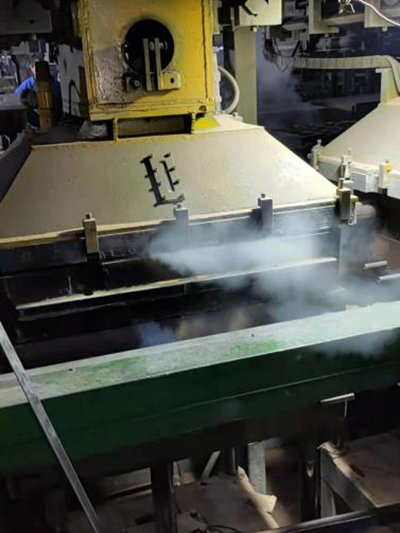How to Sand a 3D Print A Step-by-Step Guide
3D printing has revolutionized the way we create tangible objects, allowing for incredible creativity and innovation. However, the finish of a 3D print often leaves something to be desired. Layer lines, print artifacts, and minor imperfections can detract from the overall aesthetic and functionality of your finished piece. One effective method to achieve a smoother surface is sanding. This article will guide you through the process of sanding a 3D print, ensuring that you achieve the best results possible.
What You’ll Need
Before you start sanding your print, gather the necessary materials
- Sandpaper A variety of grits will be helpful (start with 120-150 grit for rough sanding, then progress to 220-320 grit for finer finishes). - Sanding Block A flat surface can help achieve a more even sanding. - Water (for wet sanding) This can reduce dust and improve results. - Protective Gear Wear a mask and goggles, especially if you’re working with a material that creates fine dust. - Finishing Products Optional materials like primer, paint, or sealant for a polished look.
Step 1 Prepare Your Workspace
Ensure that your workspace is well-ventilated, especially if you are working with materials that produce dust. Lay down some newspaper or a drop cloth to catch any debris. Organize all your materials so that they are within easy reach.
Step 2 Start with Coarse Grit Sandpaper
Begin with a coarse grit sandpaper, such as 120 or 150. This will help to remove any large imperfections, layer lines, or supports that may be present on your print. Using a sanding block can help distribute pressure evenly across the surface. Sand gently, applying light pressure in smooth, circular motions to avoid creating new scratches or gouges.
Step 3 Check Your Progress Frequently
Periodically stop and inspect your print to evaluate your progress. It’s easy to accidentally oversand, so take your time. If you notice a particular area that seems to need more attention, focus your efforts there, but always keep an eye on the overall shape of the print.
how to sand a 3d print

Step 4 Move to Finer Grit Sandpaper
Once you’ve achieved a more uniform surface with the coarse grit, it’s time to switch to finer sandpaper. Use something in the range of 220-320 grit. This step is crucial for smoothing out the surface further and refining the finish. Continue to sand using the same circular motions, being careful not to apply too much pressure.
Step 5 Wet Sanding
For an even smoother finish, consider wet sanding. Wet sanding involves lightly spraying the area with water before sanding. This technique helps reduce dust and allows the sandpaper to glide more easily over the material, resulting in a finer finish. Use the same grit range as before and continue to apply gentle pressure.
Step 6 Clean Your Print
After you’ve finished sanding, it’s essential to clean your print to remove any dust and debris. Use a damp cloth to wipe down the surface and ensure that no particles are left behind. This step is vital before you proceed to any finishing work like painting or sealing.
Step 7 Optional Finishing Touches
Once your print is cleaned and dried, you may choose to apply additional finishing touches. This could include a layer of primer, paint, or sealant. These products not only enhance the appearance but also protect the print from wear and tear.
Conclusion
Sanding a 3D print may seem daunting, but with the right tools and techniques, it can be a straightforward process that significantly improves the look and feel of your final product. Whether you're preparing a model for display or a functional piece for everyday use, taking the time to sand your 3D prints can lead to remarkable results. Don’t hesitate to experiment with different grits and finishes to find the perfect combination that works for your specific project. Happy sanding!
Post time:Dec . 25, 2024 12:23
Next:how long does sand casting take
